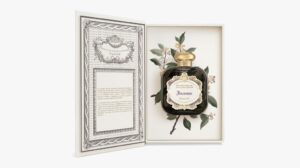The doorbell rings, and you accept a package delivered by FedEx, United Parcel Service (UPS), Amazon, or one of the other companies engaged in package transportation and delivery.
That parcel was likely aboard an aircraft last night, carrying the livery of the same company that delivered it to your door.
We take the transportation of goods by air for granted. However, air freight did not blossom into a full-fledged industry until after the Second World War.

BEFORE DEDICATED CARGO AIRLINES WAS AIR EXPRESS
In the early days of commercial aviation in the US, airlines often boasted that they carried passengers, mail, and express.
Express refers to parcels that require expedited transport. Note that the terms express and parcel have carried over to today’s giant transporters, Federal Express (FedEx) and United Parcel Service. Parcels, or small packages, were about all that could fit in the baggage and cargo compartments of the airliners of the 1920s and 1930s.

LEAVE IT TO THE VETS
World War II showcased the airplane’s versatility, with the military’s Air Transport Command (ATC) hauling hundreds of thousands of pounds of materiel across oceans, mountains, deserts, and jungles. This effort deepened expertise in moving large cargo loads using aircraft like the Douglas C-47 (the military version of the DC-3), C-54 (DC-4), and Curtiss C-46.
When hostilities ended, pilots fresh from wartime duties banded together, pooled their funds, and purchased or leased war surplus aircraft to form non-scheduled airlines (non-skeds).
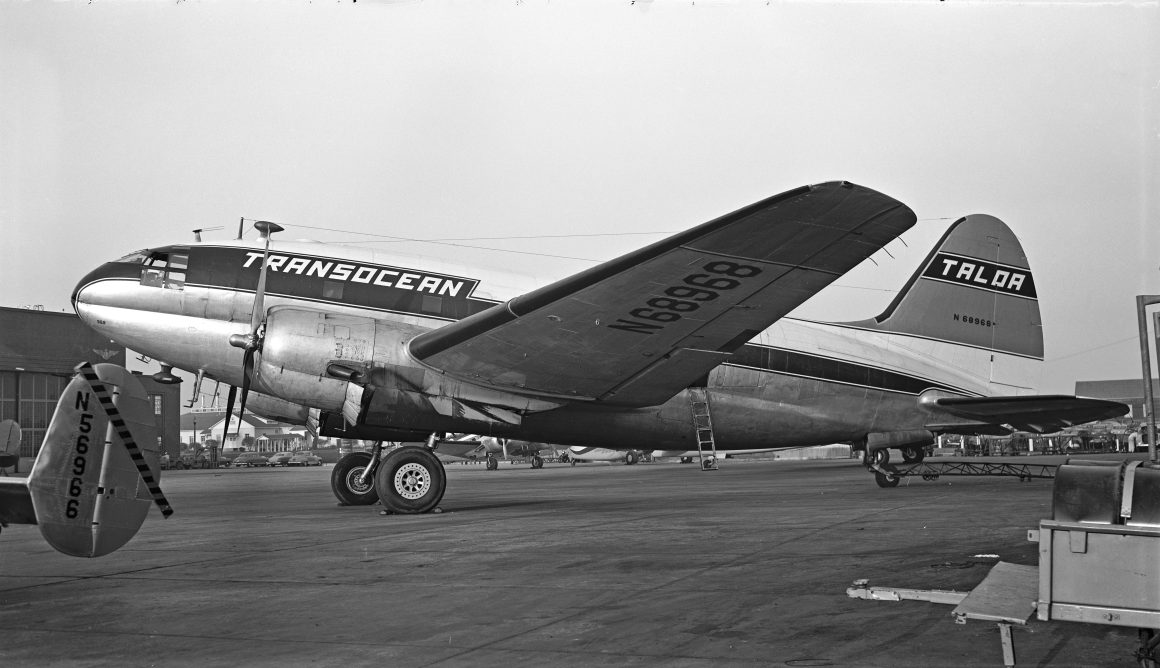
The market for air cargo mushroomed. Flower growers in California found a new way to ship their product to markets back East, while fashion designers in New York could now get their merchandise into distant stores much more quickly.
Many veteran-owned and operated firms functioned as tramp steamers of the air, finding work wherever they could, and most of these outfits did not exist for long. Only the professionally run companies that sought long-term contracts and adhered to the highest aviation safety standards would survive the shakeout of this new, non-scheduled air freight industry.
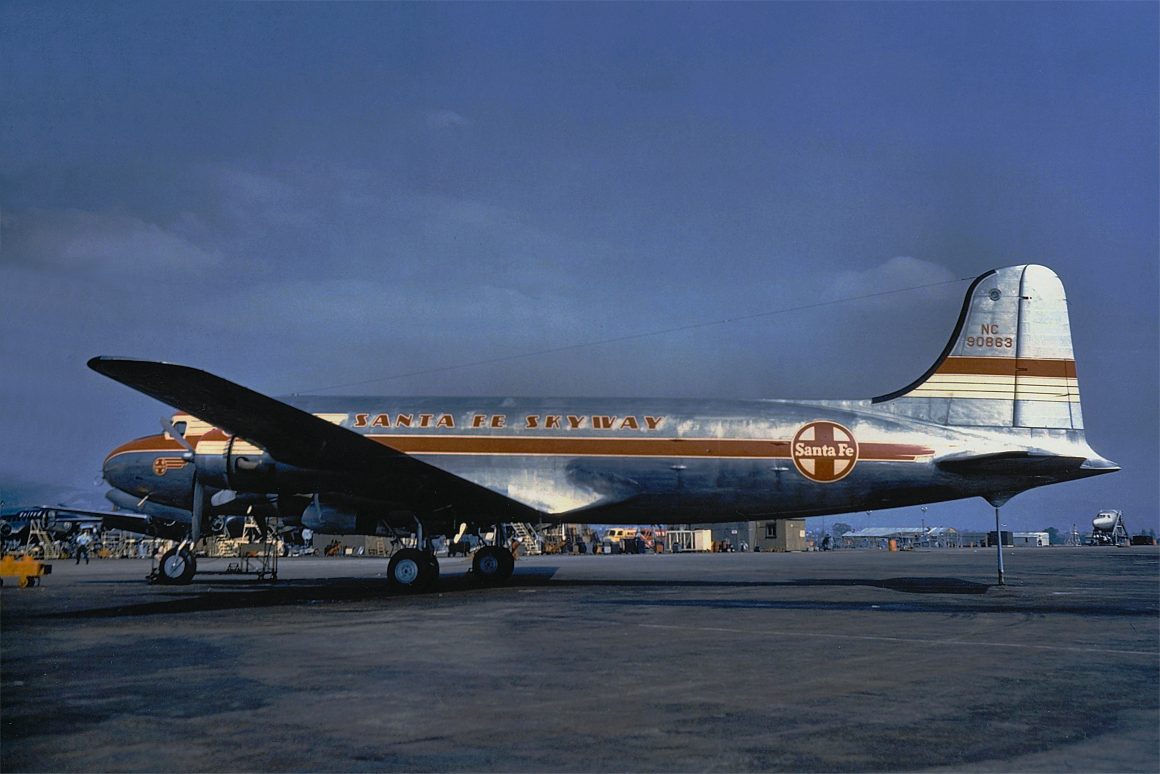
CERTIFICATION OF DEDICATED CARGO AIRLINES
With the postwar boom in air freight, everybody wanted to get in on this new field. For example, the Santa Fe Railway created Santa Fe Skyway as a subsidiary company. The Civil Aeronautics Board (CAB) soon put an end to the railroad’s air cargo plans by declaring that surface transport operators should not be allowed to operate airline companies.
In July 1949, the CAB certified a few of these outfits to offer scheduled air freight service over specially designated routes. Many other freight-flying carriers had been driven out of business by a vicious rate war and the CAB’s purge of the non-skeds.
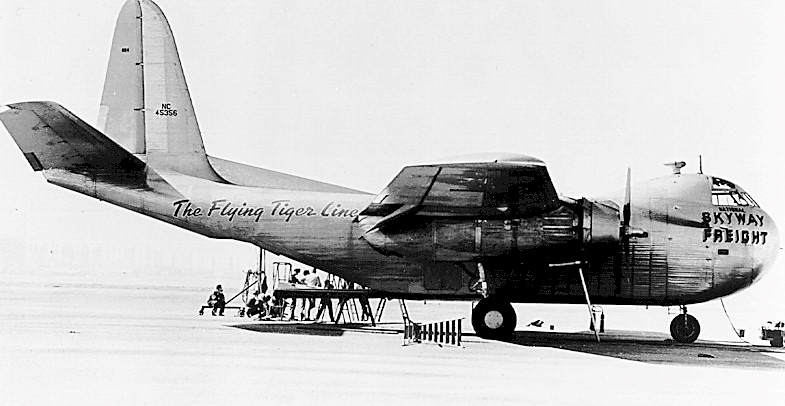
FLYING TIGER LINE
During the war, from December 1941 until July 1942, a group of airmen known as the American Volunteer Group (AVG) protected the Burma Road into China against enemy fighters, enabling supplies to reach Chongqing, the wartime capital of the Republic of China. The group was referred to in the popular press as the Flying Tigers.
Bob Prescott was one of the famous Flying Tiger pilots. As hostilities wound down, he called upon some of his wartime buddies to join him when he established the National Skyway Freight Corporation on 25 June 1945. Because of the makeup of its workforce, his non-scheduled airline quickly became known as the Flying Tigers.

The company’s initial fleet consisted of several Budd Conestogas, one of the most unusual aircraft types ever flown. Built by the Edward G. Budd Co., a railroad car manufacturer, the twin-engine Conestoga was constructed of stainless steel and featured a ramp that dropped down from beneath the tail for easy loading of bulky equipment or vehicles. Capable of lifting nearly five tons of freight, the Budds nevertheless suffered from performance issues. By June 1946, they were replaced by a fleet of 16 C-47s.
The company’s name officially became Flying Tiger Line, Inc. (colloquially referred to as Tiger or the Tigers) in February 1947, and the airline benefited from military contracts, commercial freight work, and passenger charters.
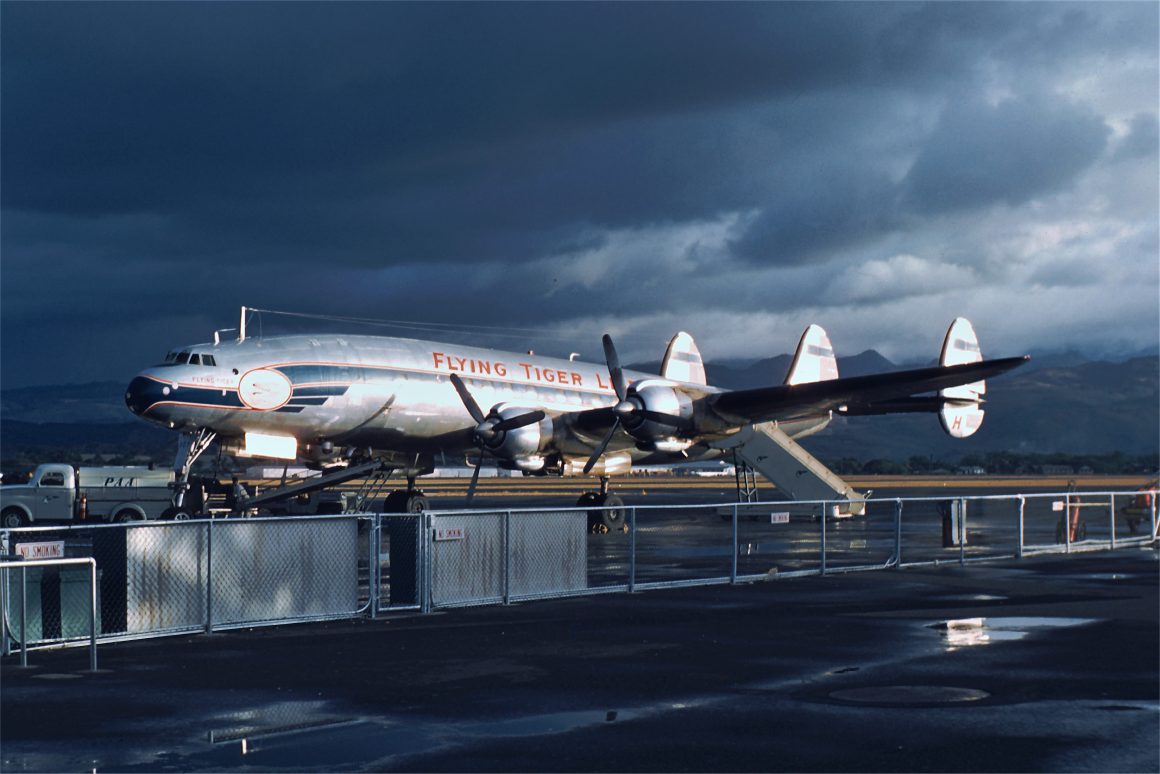
In 1949, Flying Tiger began operating scheduled air freight flights over a transcontinental system from Los Angeles and San Francisco to New York, Providence, and Boston, with permission from the CAB to serve many cities in between. Within the first six months of starting scheduled service, Tiger flew eight million revenue ton-miles—a substantial increase over any previous six-month period.
Scheduled operations were supplemented by heavy participation in the transpacific airlift associated with the Korean War, the transport of refugees resulting from the Hungarian Uprising of 1956, and flying supplies needed in the construction of the Distant Early Warning (DEW) Line across Canada in the mid-1950s.

Business was so good that the company ordered 10 swing-tail Canadair CL-44Ds – stretched freighter conversions of the turboprop Bristol Britannia – for delivery in 1961. These would supplement a fleet of Lockheed L-1049H Super Constellations.

Flying Tiger Line emerged as the most successful postwar scheduled air freight startup. In 1988, Federal Express, a leader among the new generation of cargo airlines, acquired Flying Tiger. By then, the little company that had started out with just a few Budd Conestogas was operating a fleet of 46 aircraft, including 21 Boeing 747s.
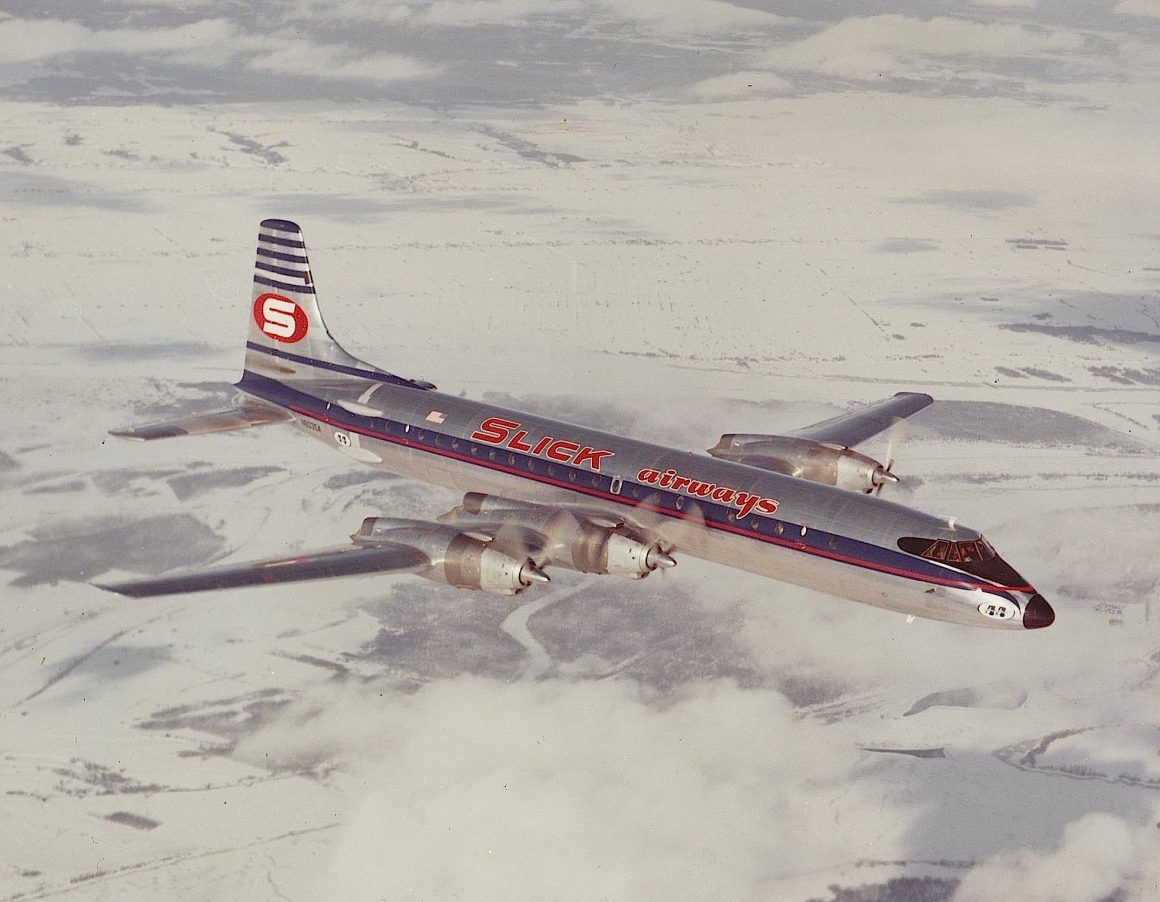
THE RISE OF AMERICA’S ALL-CARGO AIRLINES: SLICK AIRWAYS
Founded in 1946 by Earl Slick—another veteran of the Air Transport Command—Slick Airways established its base at Alamo Field–today’s San Antonio International Airport (SAT)–in San Antonio, Texas.
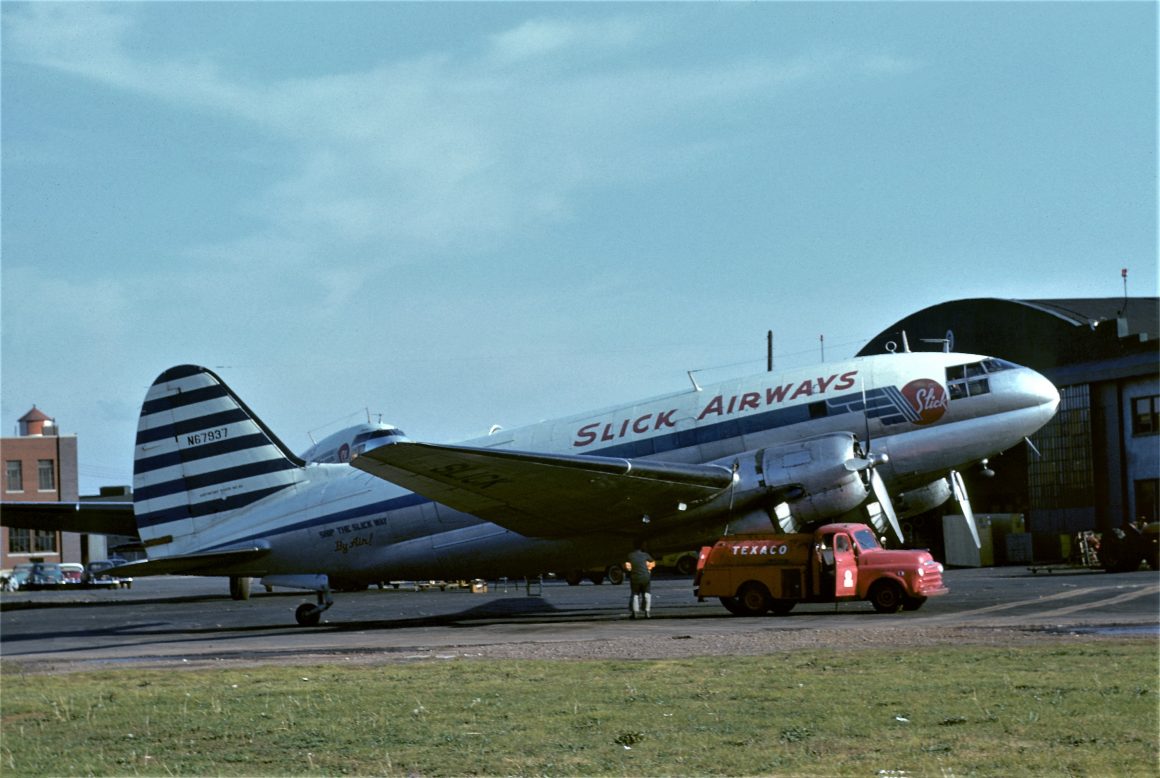
With a fleet of C-46s, some modified with refrigeration equipment, Slick quickly gained popularity among shippers, particularly in the transport of perishables.
After gaining certification, Slick launched transcontinental scheduled service over a network that shared many stations in common with Flying Tiger. After acquiring bankrupt California Eastern Airways ‘ assets, the company then relocated its headquarters to Burbank.
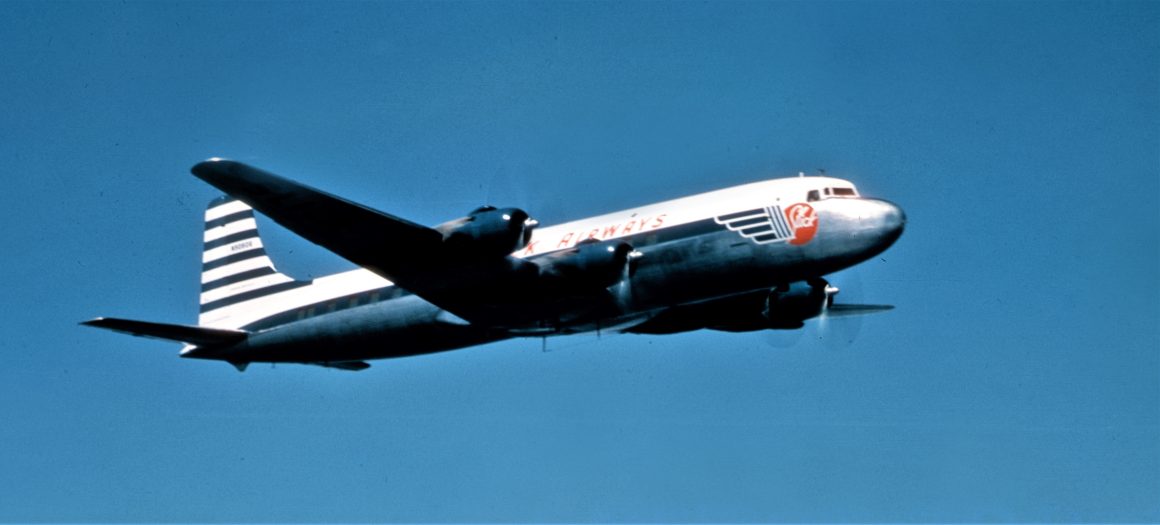
In April 1951, Slick was the first airline in the world to fly the Douglas DC-6A, a cargo version of the exceptional DC-6B.
After a few money-losing years, a return to profitability in 1959 led company managers to order six swing-tail CL-44Ds, the first of which entered service in February 1962 on a military charter from San Francisco to Manila.

After another financial downturn, Slick’s management decided to exit the airline business altogether. It sold its assets to Airlift International, which took over the transcontinental scheduled route in the summer of 1968.
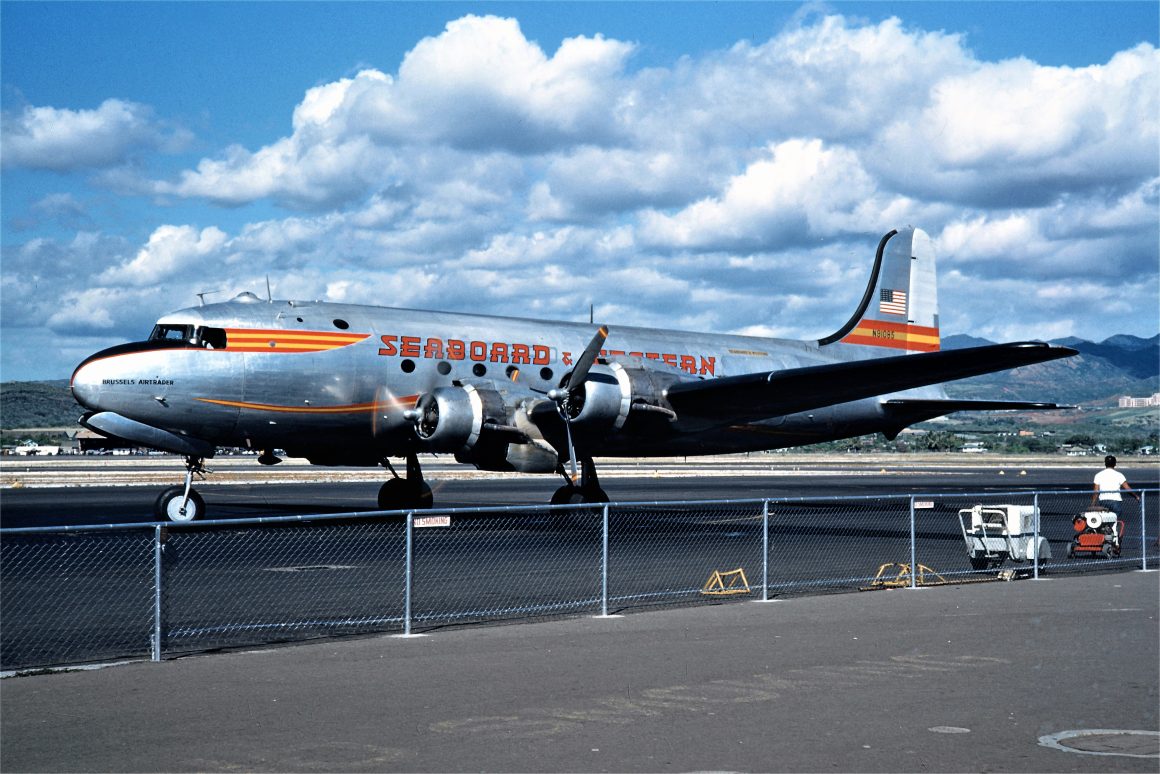
THE RISE OF AMERICA’S ALL-CARGO AIRLINES: SEABOARD & WESTERN
On 16 September 1946, brothers Arthur and Raymond Norden founded Seaboard & Western Airlines (S&W). From the outset, they aimed to provide transatlantic cargo service rather than domestic operations within the US.
Seaboard & Western played a pivotal role in moving cargo across the Atlantic during the Berlin Airlift (1948-49). Subsequently, the company secured a long-term contract with the International Relief Association (International Rescue Committee) and actively participated in passenger and freight transportation across the Pacific in support of the US military during the Korean War.
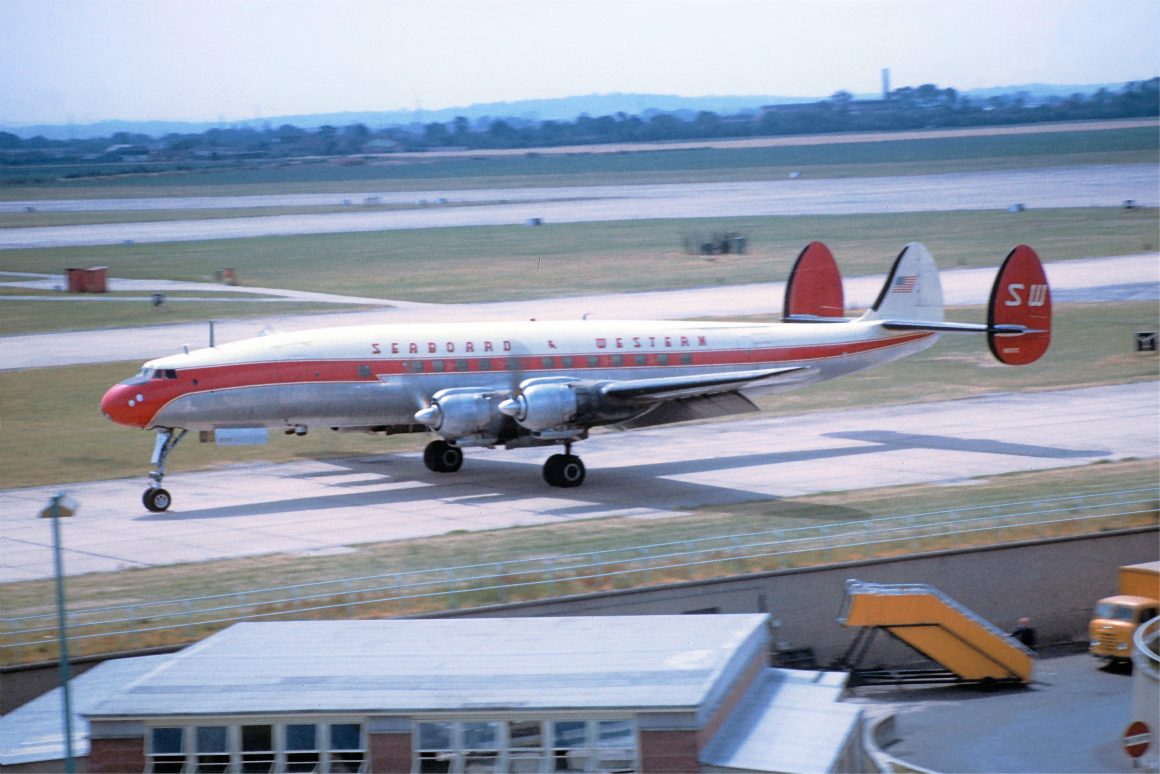
S&W operated scheduled C-54 and Lockheed L-1049H Constellation cargo flights across the Atlantic, while C-46s handled local service within Europe. Like Flying Tiger and Slick, Seaboard & Western ordered CL-44Ds, which were introduced in 1961, the same year the company changed its name to Seaboard World Airlines.

Starting in 1965, under a Civil Reserve Air Fleet (CRAF) commitment with the US military, Seaboard flew CL-44s and DC-8s in support of the Vietnam War.
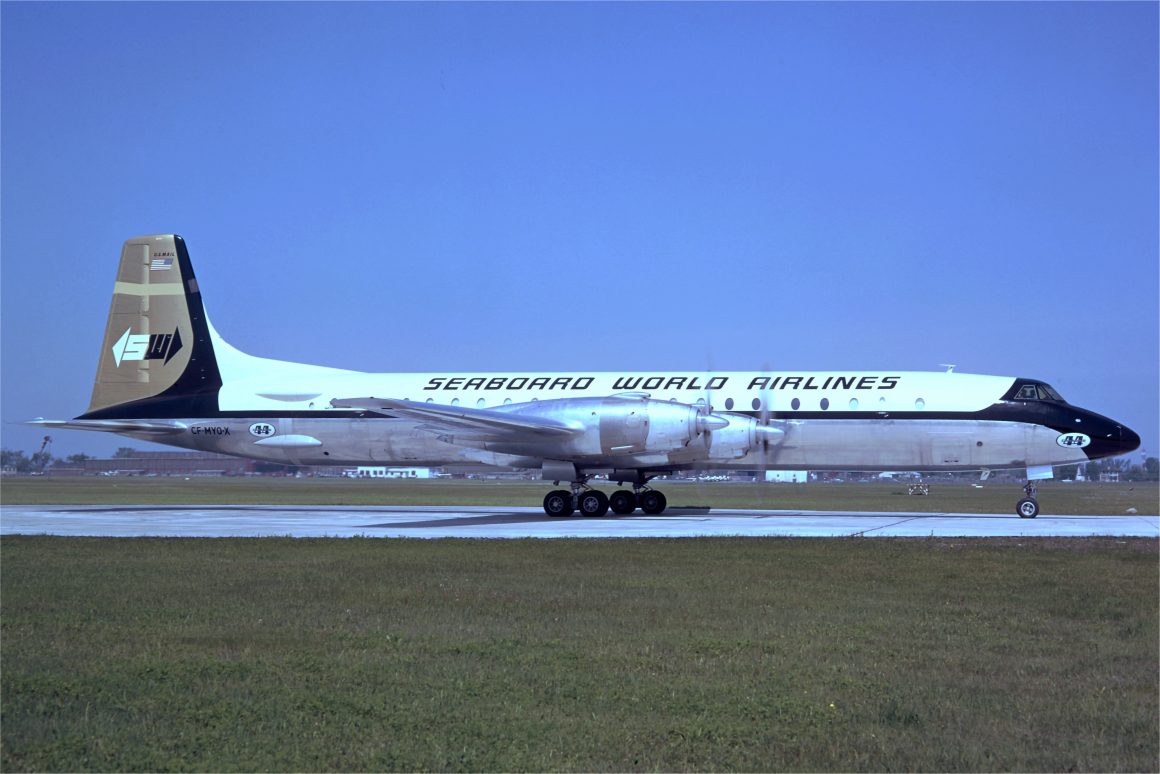
Boeing 747 freighters joined the fleet in 1974. Dubbed Seaboard World Containerships, the 747s allowed Seaboard to join the ranks of cargo airlines enjoying the new intermodal container shipping method.
Flying Tiger acquired Seaboard World in 1980, at which time Seaboard’s fleet included four 747s –with two more on order – one Douglas DC-10, one DC-8-55, and five DC-8-63s.

THE RISE OF AMERICA’S ALL-CARGO AIRLINES: RIDDLE AIRLINES
On 21 November 1955, the Civil Aeronautics Board awarded Riddle Airlines and American Air Export and Import Company (AAXICO) certificates to operate scheduled cargo service on north-south routes east of the Mississippi River.
Riddle Airlines was founded in 1945 by John Paul Riddle (whose legacy remains today as the namesake of Embry-Riddle Aeronautical University).

The 1955 award from the CAB allowed Riddle to operate scheduled cargo flights from Boston, New York, Philadelphia, Baltimore, and Washington to Miami via several intermediate points and from Chicago, Detroit, and Cleveland to Florida via en route cities, including Atlanta.
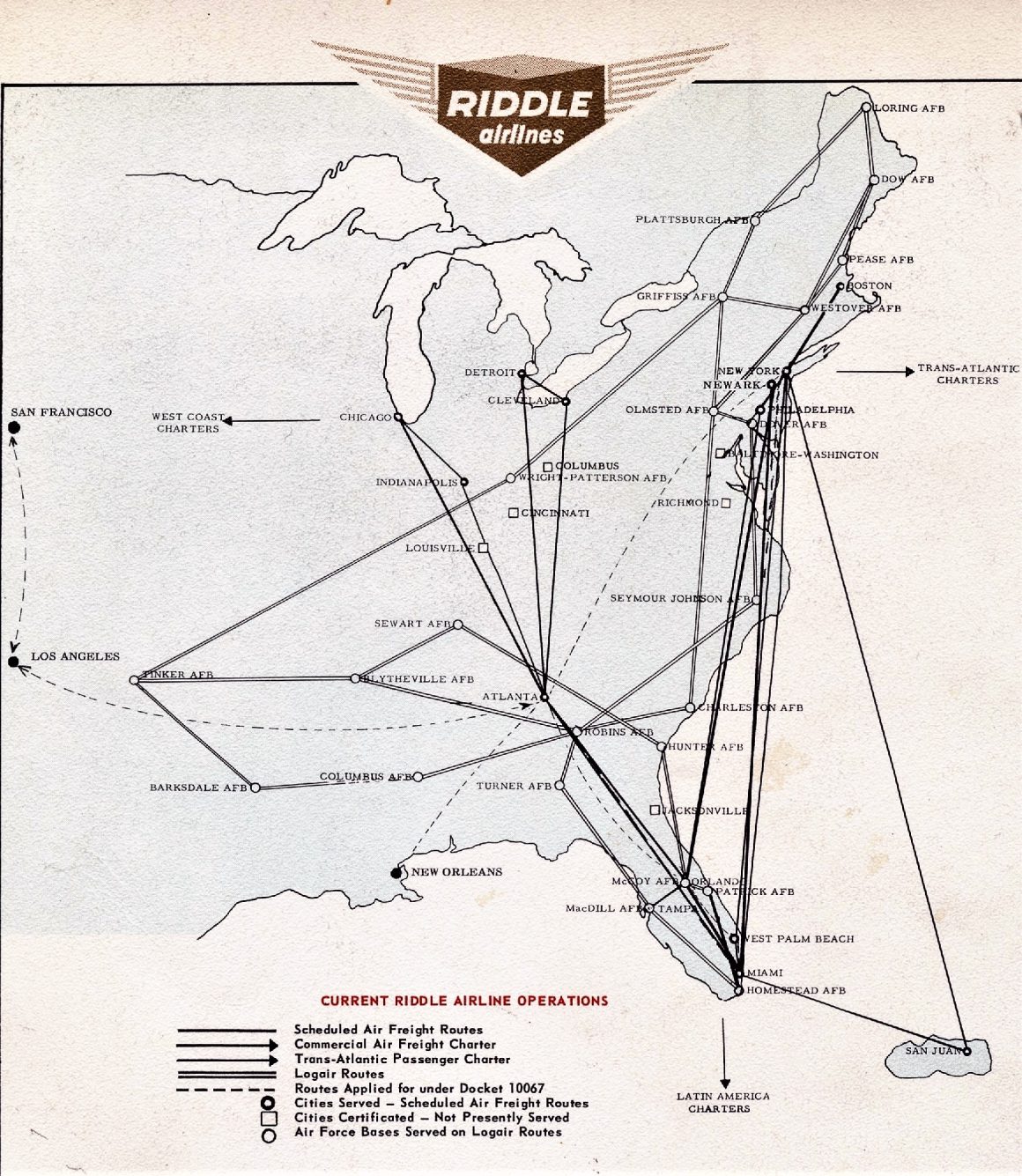
In addition to its scheduled service, Riddle held significant contracts to perform work for MATS (Military Air Transport Service).
Riddle augmented its fleet of C-46s and DC-4s with several Armstrong-Whitworth Argosies, which it deployed on military LOGAIR (Logistics Cargo Airlift) contracts.

Financial problems forced Riddle to shut down its scheduled network and relinquish its Argosies in mid-1962. However, after a management shakeup, Riddle reinstated scheduled service with Douglas DC-7CFs and, in 1964, the company’s name was changed to Airlift International.
Airlift’s acquisition of Slick Airways, in addition to its military contracts and scheduled route network, led to more new aircraft orders: stretch DC-8s, Boeing 727s and 707s, and Lockheed L-100s.

The good financial times for Airlift International didn’t last. Congress deregulated the US air cargo industry a year before the Airline Deregulation Act of 1978 was signed into law, and fierce competition led Airlift International to file for bankruptcy protection in 1981.
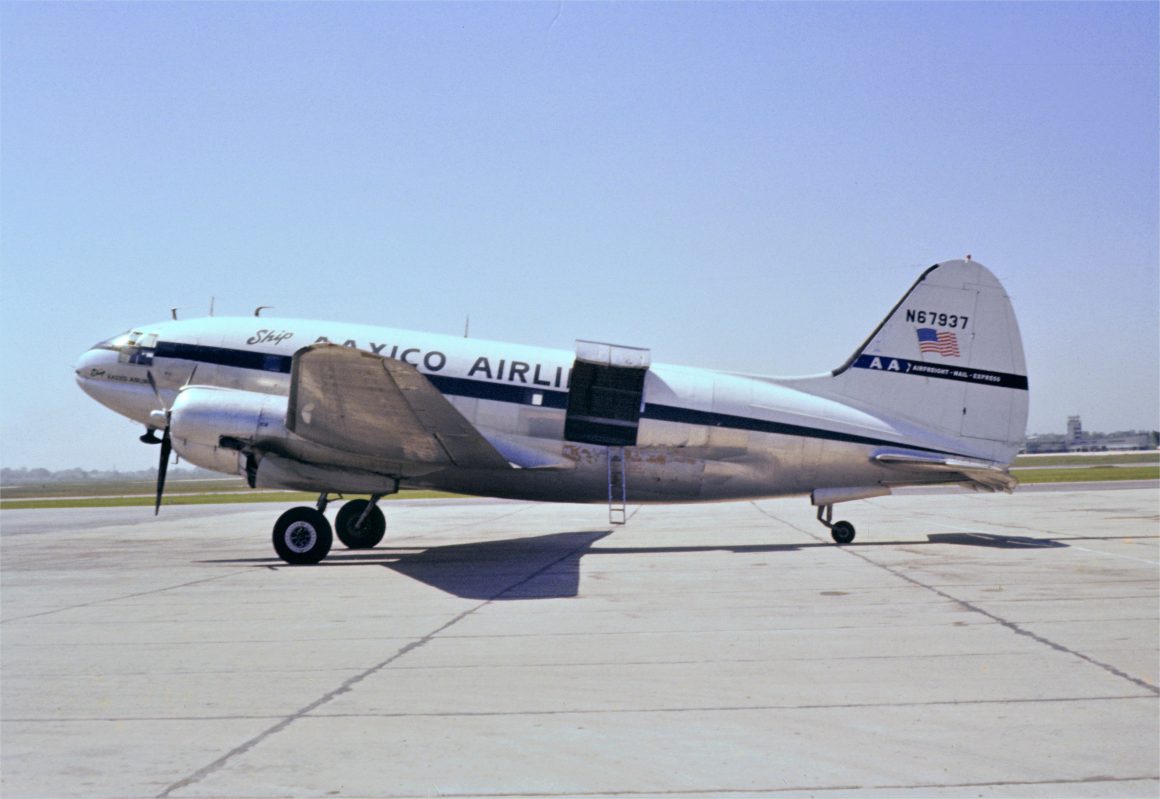
THE RISE OF AMERICA’S ALL-CARGO AIRLINES: AMERICAN AIR EXPORT AND IMPORT COMPANY (AAXICO)
In November 1955, the airline won its certificate to operate scheduled cargo flights along routes from New York, Philadelphia, and Washington to New Orleans via Atlanta, Birmingham, and other intermediate points and from Chicago, Detroit, and Cleveland to New Orleans via Birmingham and other cities.

With a fleet of C-46s, AAXICO operated its scheduled routes from late 1956 until the summer of 1959, when management decided it was not profitable. AAXICO then abandoned the commercial cargo business altogether to concentrate on military contracts, particularly LOGAIR services, which provided a large volume of activity for the company.
AAXICO lost its identity when it merged with Saturn Airways, a supplemental air carrier, in 1965.
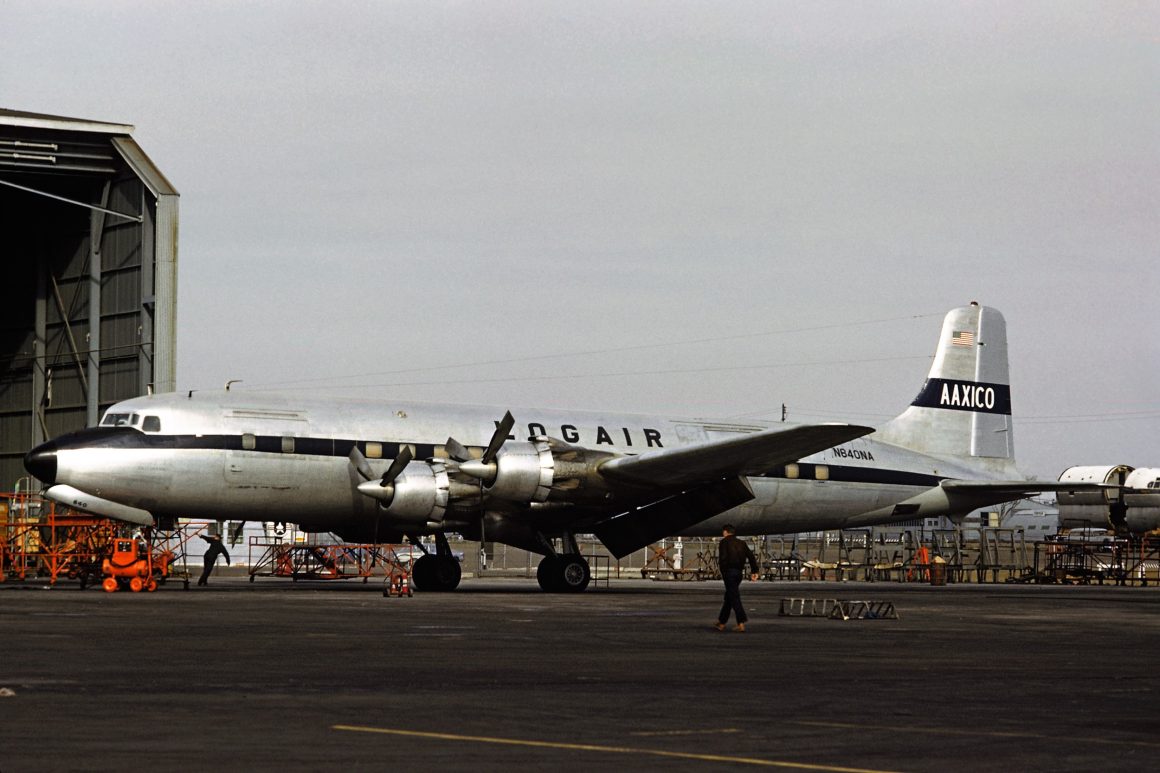
EPILOGUE
The cargo airlines covered in this story pioneered the scheduled all-cargo market, although each operated some passenger charters during their existence. They are the forerunners of today’s international freight specialists.
So, the next time a FedEx or UPS delivery person rings your doorbell, remember the entrepreneurs behind these airlines—the ones who started the ball rolling toward the express parcel service that we enjoy today.
Total
0
Shares
Credit: avgeekery.com



